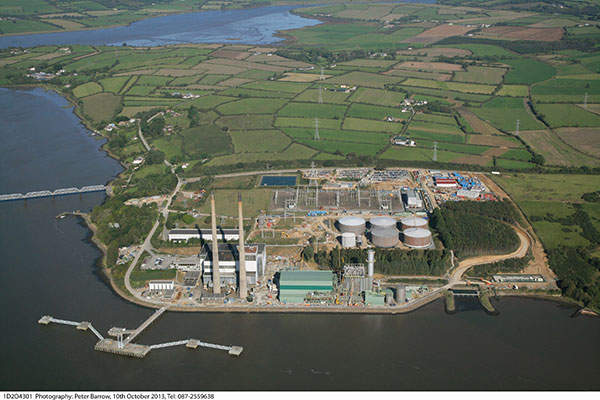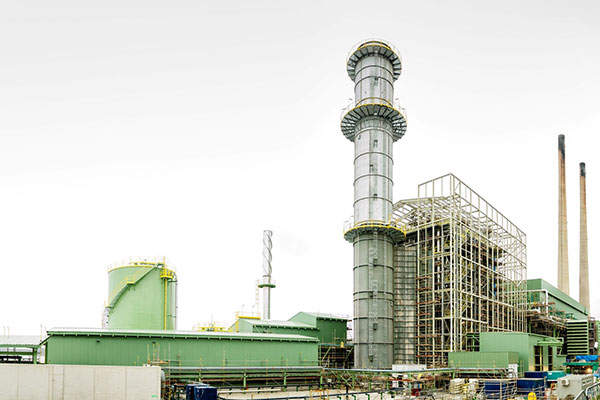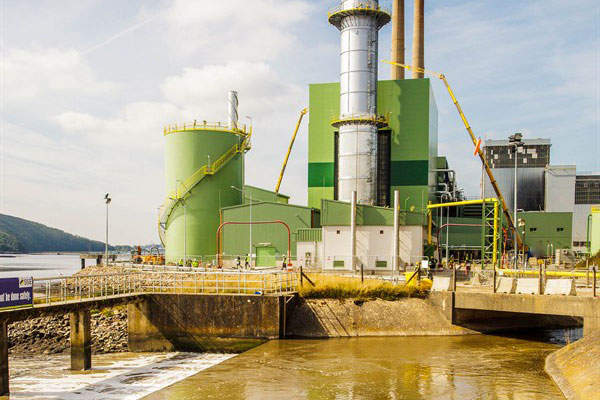The 460MW Great Island combined-cycle gas turbine (CCGT) power plant is located near Waterford Harbour in Great Island, Wexford County, Ireland. It replaces the 240MW fuel oil unit at the existing plant site.
Scottish and Southern Energy (SSE) acquired the project as part of a portfolio of assets purchased from Endesa Ireland in October 2012.
The gas turbine was fired-up and synchronised to the grid for the first time in September 2014, marking the completion of the construction. The project created more than 1,200 jobs during construction and will supply electricity to more than 500,000 Irish homes.
At an investment of more than €330m, it is one of the biggest infrastructural projects in the country and is expected to be the cleanest and most reliable gas power plant in the country.
Plant design and turbines
The CCGT project is located at the meeting point of the River Suir and River Barrow. It is a single-shaft plant featuring a Mitsubishi gas turbine and steam turbine operating on the same generator. Natural gas is the primary source of fuel.
Its gas turbine generator includes a multi-stage axial-flow compressor section, a combustion chamber and a multi-stage axial-flow turbine section. The fuel is combusted using air from the air compressor with the resulting hot gas passing through the turbine section and rotating the shaft. This drives the compressor and the electrical generator to produce electricity.
The waste heat generated is used to convert water into high-pressure steam using a heat recovery steam generator (HRSG). This steam is supplied to the steam turbine to ultimately drive a generator and produce additional electrical power.
Water for the cooling system is supplied from the Barrow Estuary.
Transmission of power
Premier Power has built a £200m, 600MW combined-cycle gas turbine power station on a brown field site in Ballylumford, Northern Ireland.
The electrical power produced by the plant is fed to the existing 220kV switchyard that is owned and operated by state-owned electric power transmission operator EirGrid.
Voltage can be increased to 220kV at the switchyard and transported to the existing EirGrid switchyard through an underground cable to connect to the national grid.
Natural gas supply
Bord Gáis Network is supplying the natural gas at a minimum guaranteed pressure of 19barg and 15ºC. The gas is supplied through a 46km-long and 400mm-diameter pipeline from the Cork Dublin Pipeline on the existing gas transmission network in County Kilkenny.
Construction and infrastructure facilities
Major construction works for the replacement project include the construction of a turbine building and an electrical building. More than 3,000t of structural steel was used for the plant construction.
The new project will use most of the existing plant infrastructure such as the cooling water inlet and outlet system, process water reservoir, distillate storage and the administration building.
Contractors
Endesa awarded the contract for the construction and commissioning of the power plant to a joint venture formed by Initec Energía, Cobra and Dragados. Initec also acted as the structural engineer.
Mitsubishi Heavy Industries supplied the power train comprising turbines, generator and condenser, while Nooter/Eriksen supplied the boiler. Nooter/Eriksen contracted Toros for the manufacturing of structural steel.
Kiernan Structural Steel was awarded the contract to provide structural steel, plate girder columns, beams and crane beams, as well as pipe bridges and fire protection painting.
Meanwhile, Mott MacDonald Ireland conducted the environmental impact assessment study.
John Sisk and Sons engaged Banagher Precast Concrete on behalf of the joint venture for the supply of precast concrete and for a bridge deck design to span the cooling outflow channel. It also asked MMOS Consulting Engineers to provide reinforced concrete (RC) design and details to facilitate the construction of the RC elements.
Atlantic Projects was responsible for the erection of a three-pressure level HRSG at the site.







